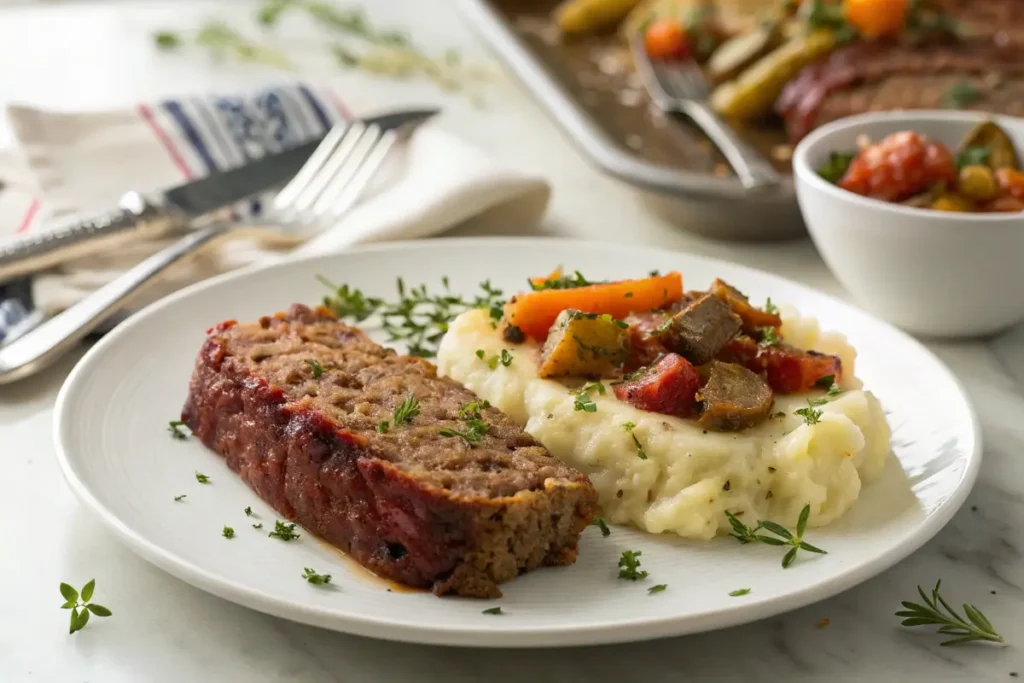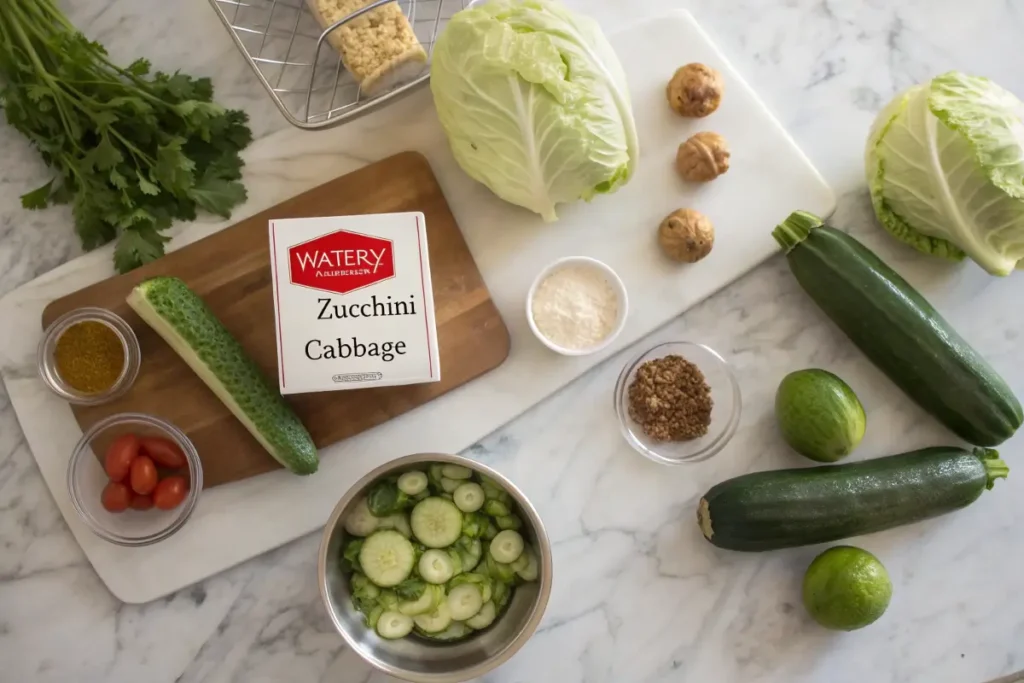When it comes to making a delicious meatloaf, the selection of ingredients is crucial. Just as important as knowing what to include is knowing what not to put in meatloaf. Many home cooks make common mistakes that can lead to a dry, flavorless, or just plain weird final dish. In this article, we’ll explore the various ingredients you should avoid, and why steering clear of these options can help you craft the perfect meatloaf. Let’s dive right in!
Ingredients to Avoid in Meatloaf

Common Mistakes When Choosing Ingredients
One of the first things to consider is the quality of your ingredients. Sometimes, cooks grab what’s on sale or use up leftovers without thinking about how these choices affect the meatloaf. For instance, using low-quality or processed meats can lead to a greasy and unappetizing result. Instead, opt for fresh ground meats, like beef, turkey, or even a mix.
Another common pitfall is the inclusion of too many fillers. While it’s tempting to bulk up your meatloaf with breadcrumbs or rice, overdoing it can make the loaf dense and heavy. You want your meatloaf to have a nice balance—too much filler can drown out the meat’s flavor.
Why Certain Ingredients Can Ruin Your Meatloaf
Some ingredients just don’t belong in a meatloaf, and knowing what not to put in meatloaf can save you a lot of heartache. For example, strong-flavored ingredients like fish sauce or soy sauce can overpower the dish, making it taste more like a stir-fry than a classic meatloaf. Similarly, skip the citrus fruits; the acidity can throw off the overall flavor profile.
Moreover, avoid using too many spices that clash, like cinnamon or nutmeg. These spices can create an odd, dessert-like taste that’s certainly not what you’re going for. A simple blend of salt, pepper, and a few herbs will usually do the trick.
By being mindful of your ingredient choices, you can create a flavorful, satisfying meatloaf that everyone will love. Now that we’ve covered the basics of ingredients to avoid, let’s move on to Part 2 and discuss the role of binder ingredients!
The Role of Binder Ingredients
What Binders to Use and What to Avoid
Binders play a crucial role in meatloaf, helping to hold everything together and giving it that perfect texture. Common binders include things like breadcrumbs, oats, or even cooked rice. However, when thinking about what not to put in meatloaf, steer clear of using too much binder or wrong types like cornmeal or crackers. These can absorb too much moisture, making your meatloaf dry and crumbly.
Another point to keep in mind is the use of egg. While eggs are typically a great binder, using too many can lead to a rubbery texture. Stick to one or two eggs, depending on the amount of meat you’re using. If you’re unsure, it’s always better to start with less and add more if needed.
Impact of Wrong Binders on Texture and Flavor
Choosing the right binder can significantly affect your meatloaf’s overall flavor and texture. For example, using flavored bread crumbs can add an unwanted taste that might clash with the meat. Similarly, if you opt for a gluten-free binder, make sure it complements the dish rather than overwhelms it.
In essence, when pondering what not to put in meatloaf, remember to keep your binders simple and traditional. This will help create a moist and flavorful meatloaf that’s sure to impress your family and friends!
Vegetables and Add-ins to Skip

Vegetables That Should Never Go in Meatloaf
While adding vegetables to your meat loaf can be a healthy choice, not all veggies are suitable. For instance, using watery vegetables like cucumbers or zucchini can lead to a soggy meatloaf. Instead, opt for denser vegetables, such as carrots or bell peppers, which add flavor without compromising texture.
Another vegetable to avoid is cabbage. While it might seem like a good idea to toss in some greens, cabbage can release excess moisture and create an undesirable texture. So, when thinking about what not to put in meat loaf, make sure to keep it simple with veggies that complement your meat.
How Add-ins Can Alter the Taste of Meat loaf
You might be tempted to throw in some creative add-ins, but this can sometimes backfire. Ingredients like mushrooms or olives can change the flavor profile dramatically. While they might be delicious on their own, they can overpower the subtlety of the meat. Instead, consider using ingredients like sautéed onions or garlic that enhance flavor without taking over.
Additionally, some cooks experiment with sweet ingredients, thinking they’ll elevate the dish. But adding things like raisins or sweet barbecue sauce can lead to a confusing flavor mix that’s not enjoyable. In short, when considering what not to put in meatloaf, be cautious with add-ins that can disrupt the balance of flavors. Stick to simple, complementary ingredients that allow the meatloaf to shine.
Now that we’ve explored the vegetables and add-ins to avoid, let’s move on to Part 4, where we’ll discuss seasoning and flavor profiles!
Seasoning and Flavor Profiles
Seasonings That Don’t Belong in Meatloaf
When it comes to seasoning your meatloaf, the right balance is key. Some spices, while delicious in other dishes, simply don’t belong in a meatloaf. For instance, using strong spices like cinnamon or allspice can lead to an odd, unexpected flavor that resembles a dessert rather than a savory dish. Instead, stick to classic seasonings like salt, pepper, and garlic powder to enhance the meat’s natural flavor without overwhelming it.
Moreover, it’s essential to avoid using too much seasoning. While you might think more is better, this can actually mask the meat’s taste. A little goes a long way, so be sure to taste your mixture before baking. When pondering what not to put in meatloaf, consider those overpowering seasonings that can ruin a good recipe.
The Importance of Balanced Flavors
The flavor profile of your meat loaf should be well-rounded. This means avoiding extremes, whether they be too salty, sweet, or spicy. For example, using too much Worcestershire sauce can give your meat loaf a tangy kick that might not sit well with everyone. Instead, aim for a harmonious blend of flavors that complements the meat without stealing the show.
It’s also a good idea to incorporate fresh herbs like parsley or thyme. These can elevate the dish without making it taste too “herby.” Balancing flavors is crucial, so always keep in mind what not to put in meat loaf and strive for a delightful combination that everyone will enjoy.
Unconventional Ingredients That Can Ruin Meatloaf
Dairy Products to Avoid
While many home cooks might think that adding dairy products can make meat loaf richer, some can actually ruin the dish. For example, using cream cheese or sour cream can lead to a greasy texture that’s far from appetizing. These ingredients often overwhelm the meat’s flavor and can leave you with a heavy, unappealing loaf. Instead, consider sticking to simple binders and avoiding dairy altogether.
If you’re looking for richness, it’s better to use a higher-fat meat than to add dairy. This will keep your meat loaf moist without compromising its integrity. When deciding what not to put in meat loaf, dairy is often best left out.
Fruits and Sweeteners to Steer Clear Of
It might sound unusual, but some cooks try adding fruits or sweeteners to their meatloaf, thinking it will enhance flavor. However, ingredients like apples or honey can introduce unwanted sweetness that clashes with the savory profile of the meat. This can lead to a confusing taste experience, making it hard to enjoy the dish.
Instead of fruits, consider adding a bit of grated carrot for moisture and sweetness, which works much better within the context of meatloaf. When contemplating what not to put in meatloaf, remember that fruits and overly sweet ingredients can lead to a dish that doesn’t live up to its potential.
Now that we’ve covered unconventional ingredients, let’s move on to Part 6, where we’ll debunk some common myths about meat loaf ingredients!
Common Myths About Meatloaf Ingredients
Debunking Popular Meatloaf Myths
Some people believe that adding as many ingredients as possible automatically improves a meatloaf. However, this can quickly lead to flavor overload. When considering What not to put in meatloaf?, it’s vital to recognize that often, less is more. Furthermore, many assume that all ground meats behave the same way, yet the fat content and texture can vary widely between ground beef, turkey, or pork. Consequently, you may end up with a dry loaf if you choose a meat that’s too lean.
Additionally, there’s a misconception that any binding agent will work. While various binders do help maintain structure, certain options—like cornmeal or heavy cereals—absorb excess moisture and leave you with a crumbly result. Therefore, it’s better to stick to plain breadcrumbs or oats for a balanced texture.
Understanding Meat loaf Traditions
Many classic meatloaf recipes have been passed down through generations, yet they weren’t always as flavorful as modern versions. Indeed, some old-school approaches include using foods like crushed crackers or sweet fruits in the mixture. Although these might work in specific recipes, they don’t necessarily suit everyone’s taste. In addition, the tradition of topping meat loaf with sweet glazes isn’t always ideal if your goal is a savory entrée.
Hence, while family traditions are valuable, it’s still worth adapting your cooking to modern tastes. Knowing What not to put in meatloaf? helps you avoid common mistakes while respecting time-tested methods that keep this classic dish so beloved.
FAQs
What are the best binders for meatloaf?
The best binders are typically plain breadcrumbs, panko, or oats. These choices help hold your meatloaf together without soaking up too much moisture. Eggs are also essential, though you should avoid using more than two to keep the texture manageable. When asked What not to put in meatloaf?, it’s wise to skip binders like cornmeal, as they can lead to a dry and crumbly loaf.
Can I use leftovers in my meat loaf?
Yes, but be careful about what you toss in. Leftover cooked vegetables can add nutritional value, provided they’re not overly watery or seasoned. Meanwhile, steer clear of any unusual leftovers, such as sweet potatoes mixed with marshmallows, that might clash with your meatloaf’s savory nature. Ensuring the flavors are complementary will make for a better experience.
What happens if I use too much salt in meatloaf?
If you overdo the salt, your meat loaf can taste unbalanced and unpleasant. In addition, an excess of sodium can draw out moisture, leading to a drier loaf. If this happens, try mixing in fresh ground meat or adding more unsalted ingredients to balance the flavor. Always taste-test your mixture before baking to avoid this common pitfall.
Conclusion: Crafting the Perfect Meatloaf
Summary of Key Points
In our exploration of what not to put in meatloaf, we’ve covered a lot of ground. From avoiding low-quality meats and excessive fillers to steering clear of overpowering seasonings and unconventional ingredients, the key is to strike the right balance. Proper binders, complementary vegetables, and well-rounded flavors are essential for a meatloaf that truly satisfies.
Final Tips for a Delicious Meatloaf
As you head into the kitchen to try your hand at meat loaf, remember these final tips:
- Use a combination of ground meats for optimal texture and flavor.
- Experiment with different binders, but stick to classic options like breadcrumbs or oats.
- Incorporate fresh herbs and spices, but don’t go overboard.
- Resist the temptation to add too many “extras” that can disrupt the dish.
- Taste your mixture before baking to ensure the flavors are well-balanced.
By following these guidelines and avoiding the pitfalls we’ve discussed, you’ll be well on your way to crafting the perfect meatloa f every time. Bon appétit!
- “Explore how you can keep a tres leches cake beautifully moist with this detailed guide:
Why Are Tres Leches Not Soggy?” - “Learn the secrets to transforming ordinary chickpeas into a weeknight favorite in this comprehensive
Marry Me Chickpeas Guide” - “Make your date night memorable by following the
Marry Me Chickpeas Recipe Perfect Romantic Meal step-by-step.” - “Discover a flavorful twist on classic legumes with
Marry Me Chickpeas to excite your taste buds.” - “Balance your diet without compromising taste by trying these
Low Fat Vegan Meals.” - “Unravel the mystery behind a classic yet understated dessert with
What Is Plain Cake Called?” - “If you’re craving a plant-based romantic dinner, check out the
Vegan Marry Me Chickpeas Recipe for a wholesome twist.” - “Indulge in comforting flavors with a creative spin on a dinner classic through
Chicken Potpie Twice Baked Potatoes.” - “Satisfy your sweet tooth and impress guests with this decadent
Jovial Chocolate Cake Recipe.” - “Want a minimalist dessert style? Take a look at
What Is a Bare Cake Called? for inspiration.” - “Learn
What Are the Three Major Types of Cakes? to expand your baking repertoire.” - “Dive into a thorough discussion on texture issues by reading
What Is a Dry Cake? An In-depth Exploration.”







1 thought on “What Not to Put in Meatloaf? A Comprehensive Guide”